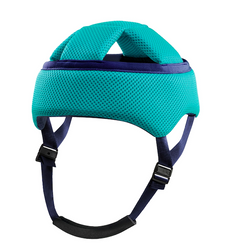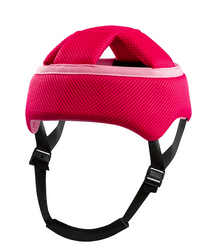Head support brace and collars
( number of products: 5 )Head support braces and collars for skull injury prevention
Head support braces are the ideal choice of prophylactic medical equipment that prevent injuries to the head. Commonly worn by people who suffer from cerebral palsy, ataxia and other uncontrollable movements, these braces cushion any impact from falls that could cause serious injuries such as skull fractures.
Head supports - who are they for?
A well-fitted head brace is often worn prophylactically to avoid head injuries, especially for people who suffer from cerebral palsy, ataxia, or spasticity. It may also be worn by people who are prone to losing balance as well.
What's more, this brace supports head stabilization, which is essential during the postoperative period. During this time, certain head braces may be worn that immobilize the cervical spine, allowing for the sutures to properly heal any remaining, post surgery wounds. Such head supports are also provided to children in order to prevent potential skull deformities.
How does the head brace work?
These head supports are mainly used as protection against injuries to the head, and are especially effective for children and adults who regularly fall or lose their balance, which makes them more prone to skull injuries. When a patient falls, these head supports absorb the force of that fall, thus preventing any skull fractures.
These braces are also suitable for people who are permanently paralyzed or may need to recover after an operation. A quality brace protects against bedsores and keeps postoperative stitches in place, without causing chafing in the area.
Head supports - variants
Due to their indications for use, each protective head brace is made of a soft materials that do not cause abrasions and other skin irritations. Although the braces are soft, the materials used in making them are durable, well insulated and have a stiffening function. Wearing this kind of support does not irritate the skin and is quite comfortable.
The head brace is comfortably adjustable, so that the patient can adjust it themselves to fit their needs. It is important to note that these products come in adult and children’s sizes, which differ in size, but not functionality - before choosing a support for yourself, however, you should consult with a healthcare professional to get their opinion as well.





